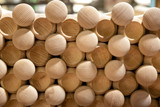Batter Up | The Evolution of Baseball Bats

The Journey of Baseball Bats: Wood vs. Metal
On the heels of the Little League World Series and a recent visit to a Pittsburgh Pirates MLB game, I thought it interesting to talk about baseball bats. While the pros still use wood bats, Little League through college uses metal or composite bats. Why, and what is the difference? Great questions because I found equal arguments for either one as we researched this topic!
The Classic Appeal of Wooden Bats

Early on, metal bats were preferred because they didn’t shatter or break as much as wood, and the velocity of the ball coming off the bat was greater. But that also caused more injury, and metallurgy had to change to adapt to deal with that.
I grew up playing baseball until my early 20s and can’t get used to the sound of the metal “ping.” I was reminded of the wood sound at a MLB game recently and think the main reason for the pros using wood is to maintain the integrity of the original game.
The Hardwood Debate: Which Wood Is Best?
Perhaps a more interesting journey down this road is the discussion of types of hardwood used for wooden baseball bats. Ash, maple, and birch are all still used by professional players.
White Ash was the traditional wood of choice for wood bat manufacturers. Pennsylvania had plenty of ash processors up through the mid-2000s. Most of them have closed for a variety of reasons—demand for one and lack of Ash trees for another. The Emerald Ash Borer (an invasive species from Asia) has decimated much of the Appalachian Forest area of ash trees. Some pockets of ash are still available in upstate New York and New England, but that population is getting smaller and smaller.
Barry Bonds made hard maple bats very popular. Maple bats offer a harder, denser piece of wood, allowing a perfectly hit ball to travel further. And denser wood shines up nicely! But maple is less forgiving than with an ash bat.
Birch bats have the best of both worlds. They react on contact much like ash but hold together better because of the similarities to maple’s properties.
Every player has a preference, and the baseball bat industry has become very specialized. No matter the type of wood, pros know to always keep the bat’s label facing straight up for maximum performance. The grain orientation is set to allow the best contact that way.
DIY Bat Making: A New Trend?
Many enthusiasts are exploring the art of bat-making. You could supply the bat that breaks the Home Run Record in MLB or create a keepsake for the Allstar in your life. Interested in procuring wood for your next project? Contact us today. We offer White Ash as turning blanks.

